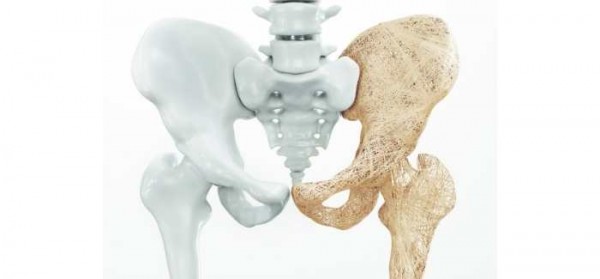By Abby Haviland, SPT
Physical Therapy for Osteoporosis
What is Osteoporosis?
Osteoporosis is a bone disease characterized by a decrease in bone mass and strength and that leads to an increased risk for fracture. PT treatments for osteoporosis can help with healthy movement, improving bone strength, and minimizing the risk of future fractures.
Bones are made of living tissue and in a normal ongoing cycle, bone is continuously formed and removed by different cells in the body. Up until about age 30, bone is formed at a faster rate than it is broken down. After age 35, bone breakdown occurs faster than bone formation, which causes a gradual decrease in bone mass. In osteoporosis, bone is removed at an even faster rate, resulting in weakened bones. In the US alone, about 54 million people are estimated to have osteoporosis
Fragility Fractures
After age 50, 1 in 2 women and 1 in 4 men will experience an osteoporosis-related fracture. These fractures are referred to as fragility fractures, and they occur due to mechanical forces that would not usually result in fracture. The most common sites for fragility fractures are the spine, hip, and wrist. These fractures often lead to increased morbidity, mortality, disability, and an overall decrease in quality of life. There may not be any signs of osteoporosis until a fracture occurs, so it is important to understand the risk factors for developing osteoporosis to allow you to be proactive in your treatment.
Risk Factors for Osteoporosis and/or Osteoporotic Fractures
- Increasing age (greatest risk after the age of 65)
- Female gender
- History of previous fracture
- Family history of osteoporosis
- Early menopause (before age 45)
- Low bone mineral density
- Low BMI (body mass index) < 20kg/m2
- Physical inactivity/ lack of weight-bearing exercise
- Alcohol intake >2 drinks per day
- Cigarette smoking
- Vitamin D deficiency
- Reduced calcium intake
- Coexisting diseases/ medical conditions
- Certain medications, especially prolonged exposure to glucocorticoids
- Caucasian and Asian race
Diagnosis
Osteoporosis is both screened and diagnosed through the use of dual energy x-ray absorptiometry (DEXA), which is used to measure bone mineral density (BMD). A T-score is given, which compares your BMD to that of a healthy young adult.
- Normal bone density: T-score within 1 standard deviation (+1 or -1) indicates normal bone density.
- Osteopenia (low bone mass): T-score between 1 and 2.5 standard deviations below normal (-1 to -2.5).
- Osteoporosis: T-score greater than or equal to -2.5 standard deviations
- Severe osteoporosis: T-score less than or equal to -2.5 standard deviations and the presence of 1 or more fragility fractures.
A diagnosis is not solely made based on the bone density score, but also takes into consideration clinical risk factors. It is recommended that all women age 65 and older and all individuals with increased fracture risk are screened for osteoporosis.
PT Treatments for Osteoporosis
First line treatment for prevention of fractures is to address risk factors. This may include exercise, smoking cessation, alcohol moderation, maintaining a balanced diet with adequate calcium and vitamin D consumption, and sunlight/ultraviolet exposure (about 20-30 minutes, 3 days per week is recommended). First line pharmacological treatment consists of Bisphosphonates, which can be used for either prevention or treatment and are taken either orally or through an IV.
Other pharmacological treatments include Raloxifene, Calcitonin, Teriparatide, Denosumab, and hormone therapy.
How Can Physical Therapy Help?
Physical therapists can help to develop an individualized program to help restore healthy movement, improve bone strength, and minimize your risk of fracture. Physical therapy treatments for osteoporosis may include work on progressive strengthening exercises (such as resistance training or weightlifting) and endurance exercises through weight-bearing aerobic activity (such as walking and running) to slow the decline of bone mineral density. They may also work on balance training to reduce risk of fractures caused by falls.
Additionally, they may provide education on proper posture/body mechanics during everyday activities and avoidance of movements that require excessive forward bending or twisting to protect the spine from compression fractures. These programs are designed to be patient-specific to make sure they are being performed at the correct intensity to ensure proper stress to the bones.
Call (518) 289-5242 to contact us Capital Area Physical Therapy for more information on how PT treatments for osteoporosis can improve movement and quality of life. Our clinics in the NY Capital District offer skilled physical therapists to evaluate your specific condition and provide the appropriate treatment techniques.






